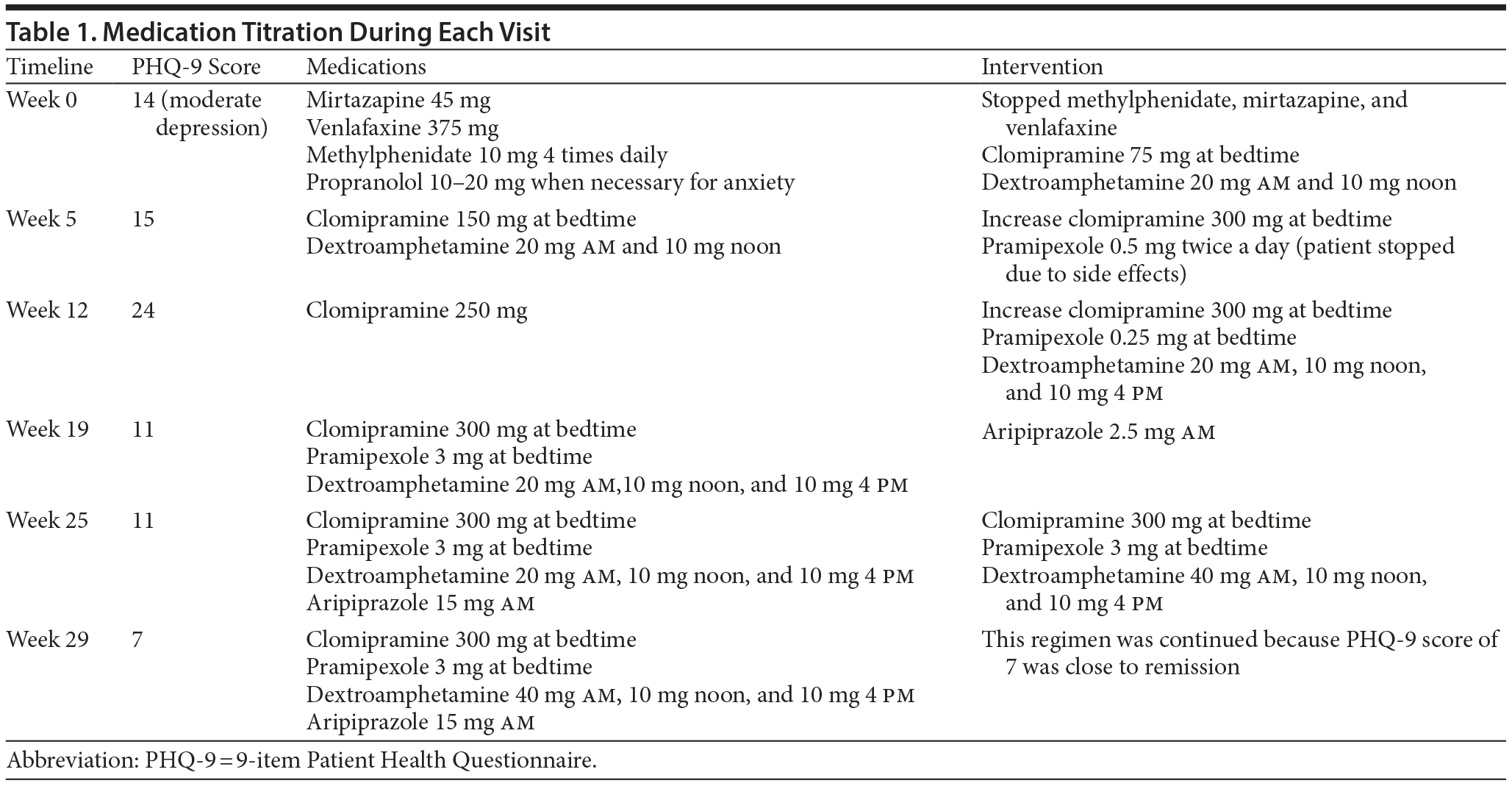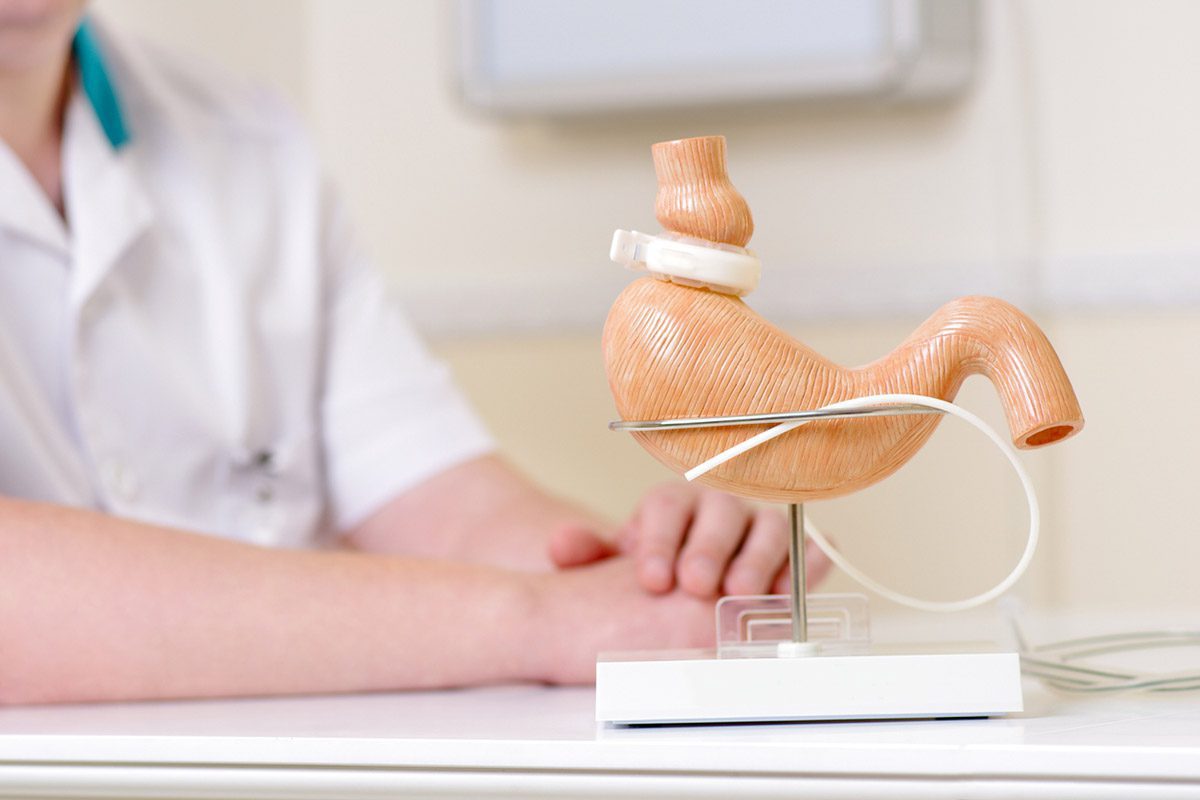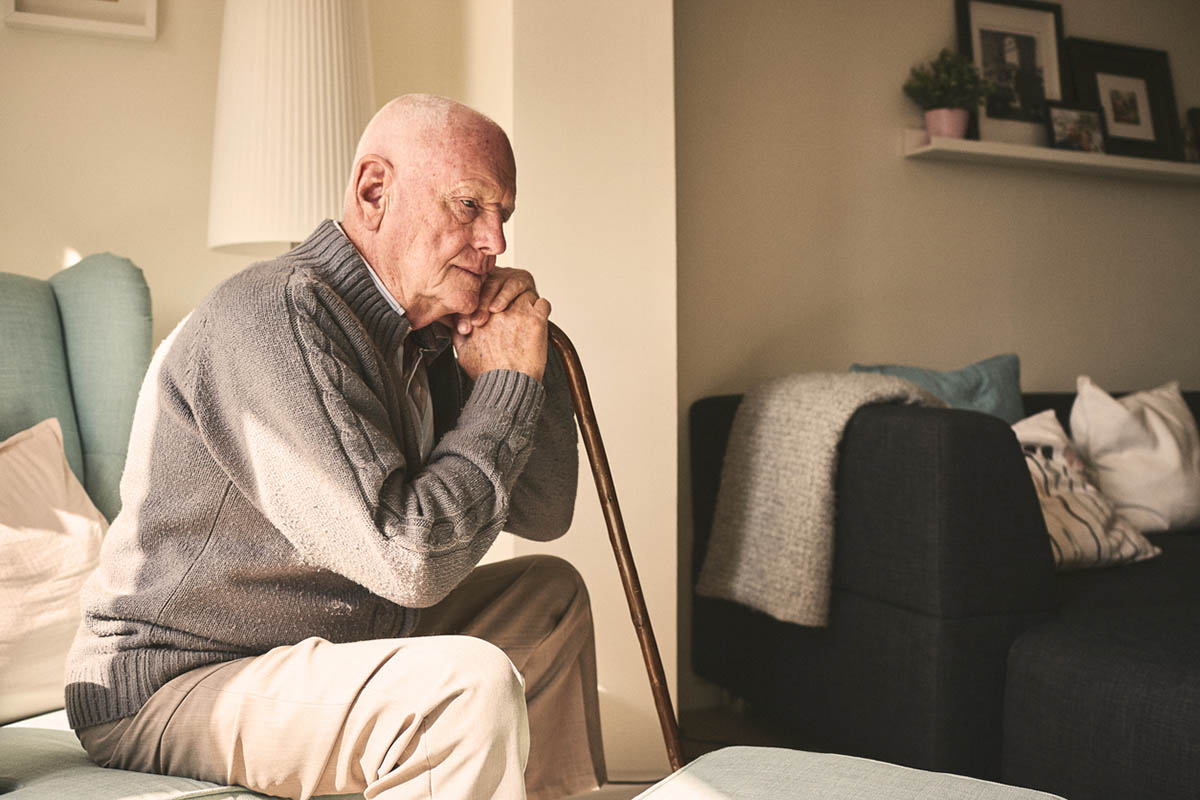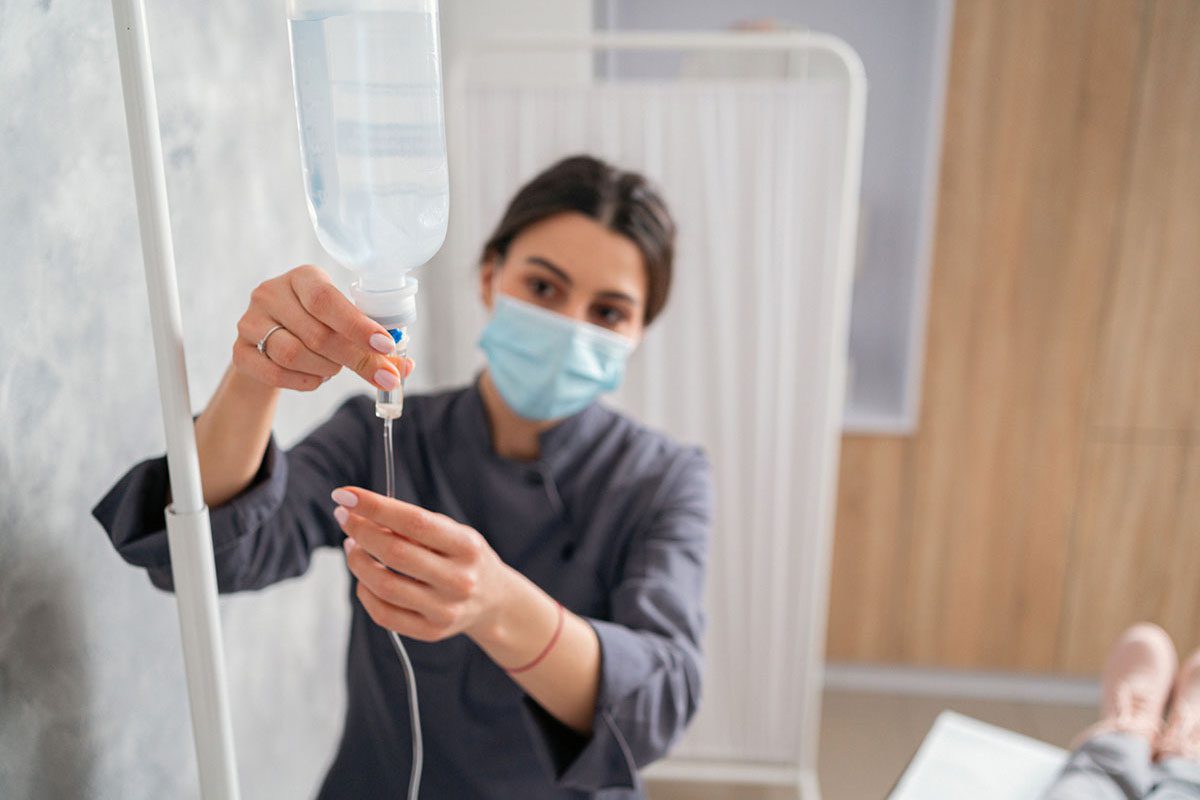Because this piece does not have an abstract, we have provided for your benefit the first 3 sentences of the full text.
To the Editor: Treatment-resistant depression is common, challenging, and difficult to treat. In this case report, we discuss the role of using multiple dopaminergic medications to achieve remission of depression. To our knowledge, this is the first case report on the use of combination therapy (clomipramine, dextroamphetamine, pramipexole, and aripiprazole) for electroconvulsive therapy-resistant unipolar depression.
A Case of Electroconvulsive Therapy-Resistant Depression Responding to Multiple Dopaminergic Medications
To the Editor: Treatment-resistant depression is common, challenging, and difficult to treat. In this case report, we discuss the role of using multiple dopaminergic medications to achieve remission of depression. To our knowledge, this is the first case report on the use of combination therapy (clomipramine, dextroamphetamine, pramipexole, and aripiprazole) for electroconvulsive therapy-resistant unipolar depression.
Case report. Mr A is a 51-year-old Hispanic man with treatment-resistant depression stage V. According to treatment-resistant depression staging,1 stage V is failure to a course of electroconvulsive therapy (ECT), which is defined as 12 ECTs, of which 8 have to be bilateral. Mr A had received 10 ECTs, and the last one was 2 weeks prior to the first visit (week 0). He had comorbid anxiety and no illicit substance use disorder. The following medications did not help Mr A in the past: fluoxetine, sertraline, paroxetine, trazodone as a hypnotic, bupropion, imipramine, phenelzine, aripiprazole 20 mg, and buspirone. Dose and duration for some medications were not available in the chart. The 9-item Patient Health Questionnaire (PHQ-9) for measurement-based care has been used in psychiatric clinics.2,3 Medication titrations are summarized in Table 1.
As shown in Table 1, Mr A attained near remission only after treatment with multiple dopaminergic medications, showing a decrease in PHQ-9 severity score as each medication was added. The final regimen at week 29 was clomipramine 300 mg at bedtime; dextroamphetamine 20 mg am, 10 mg noon, and 10 mg 4 pm; pramipexole 3 mg at bedtime, and aripiprazole 15 mg am. Mr A declined a blood test to check clomipramine levels. His corrected QT interval was 429 ms on clomipramine 300 mg and other medications. His functioning improved in the following areas: submitted thesis for his master’s degree, had more contact with his family, and had more energy to take care of household chores. Mr A was followed for 6 more months without relapse.
There is evidence to support the use of stimulants for treatment-resistant depression.4 Dextroamphetamine releases both dopamine and norepinephrine, causing a surge of monoamines. Pramipexole, a presynaptic dopamine agonist, has affinity for D2, but higher affinity for D3, resulting in higher dopamine tone, which is a different mechanism.5 The D3 receptor is involved in the motoric and anhedonic symptoms.5 Large effect sizes (0.6-1.1) have been reported for both unipolar and bipolar depression.5 Eleven of 14 depressed patients responded to aripiprazole augmentation on the basis of the cerebral utilization of 6-[(18)F]-fluoro-3,4-dihydroxy-l-phenylalanine (FDOPA) in a positron emission tomography study.6 Whole-brain, voxel-wise comparisons of pre- and postaripiprazole scans revealed increased FDOPA trapping in the right medial caudate of augmentation responders. This finding suggests that augmentation of antidepressant response by aripiprazole may be associated with potentiation of dopaminergic activity.6 Pramipexole has been combined with antipsychotic treatment in people with schizophrenia with good response.7
There is evidence to support the use of the combination of clomipramine 300 mg, dextroamphetamine 30 mg, pramipexole 3 mg, lithium 900 mg, and quetiapine 200 mg daily in a patient with treatment-resistant bipolar depression.8 To our knowledge, this is the first case report on the use of combination therapy (clomipramine, dextroamphetamine, pramipexole, and aripiprazole) for ECT-resistant unipolar depression. Mr A responded only to multiple dopaminergic medications. This combination was safe, effective, and tolerable. The neurotransmitter dopamine is not frequently targeted in the management of treatment-resistant depression. Dopamine is involved in anhedonia, anergia, motor retardation, motivation, wakefulness, alertness, reward, and pleasure-seeking neuronal circuits. We emphasize the importance of targeting dopamine in the difficult-to-treat treatment-resistant depression patients with dopamine depleted brain.9,10 This combination may be used more often by clinicians in their practices when dealing with difficult-to-treat treatment-resistant depression patients.
References
1. Thase ME, Rush AJ. When at first you don’ t succeed: sequential strategies for antidepressant nonresponders. J Clin Psychiatry. 1997;58(suppl 13):23-29. PubMed
2. Koola MM, Fawcett JA, Kelly DL. Case report on the management of depression in schizoaffective disorder, bipolar type focusing on lithium levels and measurement-based care. J Nerv Ment Dis. 2011;199(12):989-990. PubMed doi:10.1097/NMD.0b013e3182392d8f
3. Koola MM, Varghese SP, Fawcett JA. High-dose prazosin for the treatment of posttraumatic stress disorder. Ther Adv Psychopharmacol. 2014;4(1):43-47. PubMed doi:10.1177/2045125313500982
4. Candy M, Jones L, Williams R, et al. Psychostimulants for depression. Cochrane Database Syst Rev. 2008;16(2):CD006722. PubMed
5. Aiken CB. Pramipexole in psychiatry: a systematic review of the literature. J Clin Psychiatry. 2007;68(8):1230-1236. PubMed doi:10.4088/JCP.v68n0810
6. Conway CR, Chibnall JT, Cumming P, et al. Antidepressant response to aripiprazole augmentation associated with enhanced FDOPA utilization in striatum: a preliminary PET study. Psychiatry Res. 2014;221(3):231-239. PubMed doi:10.1016/j.pscychresns.2014.01.003
7. Kelleher JP, Centorrino F, Huxley NA, et al. Pilot randomized, controlled trial of pramipexole to augment antipsychotic treatment. Eur Neuropsychopharmacol. 2012;22(6):415-418. PubMed doi:10.1016/j.euroneuro.2011.10.002
8. Fawcett J. A 43-year-old male with bipolar disorder, debilitation depression. Psychiatr Ann. 2011;41(7):378-379. doi:10.3928/00485713-20110627-13
9. Argyropoulos SV, Nutt DJ. Anhedonia revisited: is there a role for dopamine-targeting drugs for depression? J Psychopharmacol. 2013;27(10):869-877. PubMed doi:10.1177/0269881113494104
10. Dunlop BW, Nemeroff CB. The role of dopamine in the pathophysiology of depression. Arch Gen Psychiatry. 2007;64(3):327-337. PubMed doi:10.1001/archpsyc.64.3.327
Author affiliations: Department of Psychiatry, Clinical Research Program, Sheppard Pratt Health System and University of Maryland School of Medicine, Baltimore, Maryland (Dr Koola); and Department of Psychiatry, University of New Mexico School of Medicine, Albuquerque (Dr Fawcett).
Potential conflicts of interest: Dr Fawcett has received stipends from the Nevada Psychiatric Association (2013) and the American Psychiatric Association (2013 and 2014) for CME lectures. Dr Koola reports no conflict of interest related to the subject of this letter.
Funding/support: None reported.
Acknowledgments: Dr Koola, a postgraduate year 4 resident in 2009-2010, was supervised by Dr Fawcett, attending psychiatrist in the Treatment Resistant Affective Disorders (TRAD) Clinic at the University of New Mexico School of Medicine, Albuquerque. Dr Koola wrote the first draft of the manuscript.
Published online: April 30, 2015.
Prim Care Companion Disord 2015;17(2):doi:10.4088/PCC.14l01745
© Copyright 2015 Physicians Postgraduate Press, Inc.
Please sign in or purchase this PDF for $40.00.






